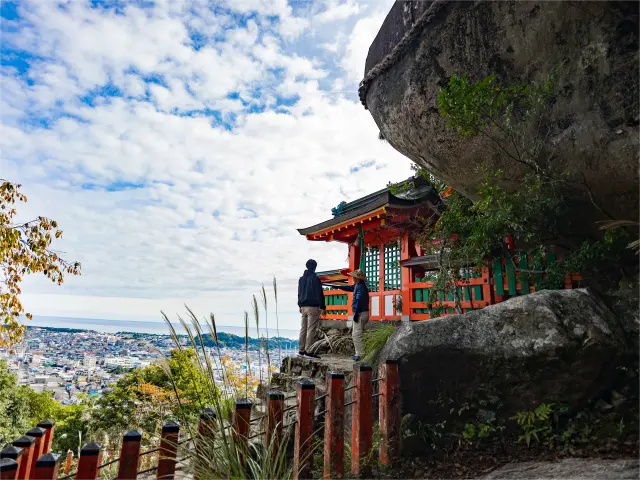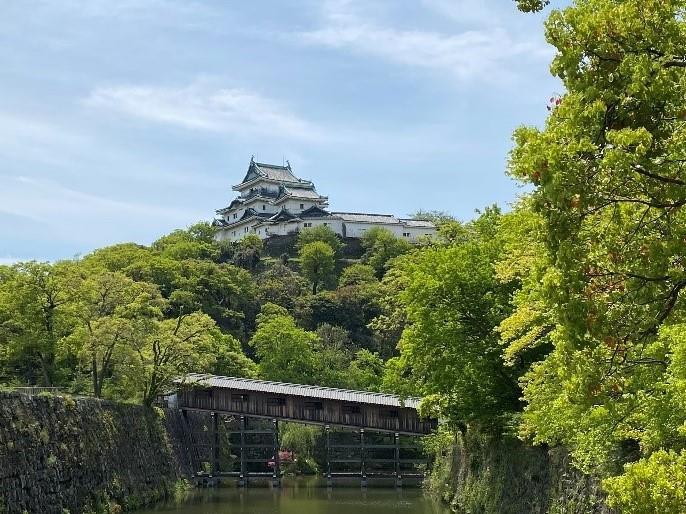
Castles, Temples and Gardens in Wakayama, day 1
Last update
Wakayama Prefecture is situated directly south of Osaka, making up the south west section of the Kii Peninsular. Perhaps best known for the extraordinary temple complex of Koyasan, which we will visit in part three of this series. Wakayama holds way too many riches to cover in its entirety in a short three-day trip, so our journey this time took us through the north of the prefecture, eastwards from Wakayama City along the Kinokawa river to Negoro, Kokawa, and then up the mountains to Koyasan. The focus of our trip were the many Japanese gardens along the way. Often hidden behind temples, castles and private homes, you won’t find many of Wakayama’s gardens in the guide books, but they are a treasure-trove of horticultural art and open the door to a Japan of a different, by-gone era.

Wakayama castle
The first stop was Wakayama City itself. Japan’s history is well know for being long and unique, but thanks to the boom in post-war development, apart from a few well-known pockets that are well doc-umented in the guide-books, much of that history is hidden to the eye beneath concrete and glass, and Wakayama City is no exception. At first glance the city seems to have little to offer the history buff, but look closer and you will find the boxy modern buildings move aside, transporting you back to Edo-period Japan.
Sitting high on a hill slap in the centre of the city is Wakayama Castle Tower. The current building is a post-war concrete reconstruction, and only a tiny part of the original castle complex at that. But even so it is a powerful presence, and as you approach and glimpse it through the modern buildings you begin to get a sense of what the city might have looked like hundreds of years ago. To get a better idea of just how elaborate the castle once was, we visited the Wakayama Historical Center at the foot of the castle. Located upstairs in a rather dreary tourist information center, the center is a little difficult to find, and holding only a few small rooms of artifacts, you might be forgiven for thinking it hardly worth a visit. But the short film reconstruction of the castle alone is well worth the 100 yen entrance fee. I must admit to generally not being a fan of museum videos, but this exquisitely detailed CG fly-over gives you a real grasp of how the castle looked at the end of the Edo period, and coupled with the actual historical maps and plans on display in the museum, my head was filled with Wakayama as it was in the 17th - 19th centuries, and once outside again in the castle grounds I found I was able to re-construct the landscape in my mind from what I had seen. This was once the seat of the immensely powerful Kishu-Tokugawa family, and thanks to the hints from the museum, the extent of their awe-inspiring power began to come to life beneath the post-war, modernized surface.
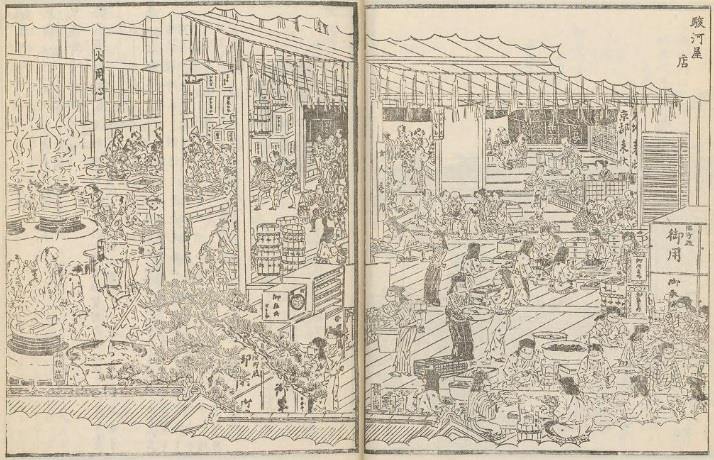
Wagashi Sohonke Surugaya:The source of National Diet Library,Japan
The castle was enlarged substantially in 1619 by Tokugawa Yorinobu, tenth son of the mighty shogun Tokugawa Ieyasu. When Yorinobu moved to the city, he gathered up the very best craftsmen and spe-cialists and relocated them near the castle. Among them was Surugaya, a confectioners located just a few minutes walk from the castle grounds, which was founded an extraordinary 560 years ago, in 1461, in Fushimi, Kyoto. Surugaya moved to Wakayama at the same time Yorinobu was expanding the castle. Some years later, in 1658, Surugaya invented a brand-new type of azuki-bean jelly which to this day is one of Japan’s most famous and best-loved sweets – neri-yokan. The shop was originally named “Tsuru-ya” - The Shop of the Crane - and its emblem still uses a crane motif. But in 1685 the lord mar-ried Princess Tsuru, and it was felt inappropriate for a mere confectioners to have the same name as a princess, so the name was changed to Surugaya. A wood-block print from the Edo-period shows just how huge and incredibly busy the shop must have been. And most fascinating, especially in these COVID times, is the foreground of the print which shows an area with workers in headscarfs and what appear to be modern surgical masks, busily preparing the famous yokan jelly. Look closer and you can see the area is bounded by decorative ropes, indicating a sacred area, and the boxes being filled with steaming sweets are embossed with the seal of the Tokugawa clan. These were the sweets for the lord himself, prepared with the utmost in care and sanitation. The current Surugaya shop is a modern build-ing, and even on a weekday was bustling with customers eager to buy the ever-popular “hon-no-ji manju” sweet cakes. At the back of the shop is an area with tables where you can enjoy a treat of sea-sonal wagashi sweets and matcha tea. And in the shop itself you can feast your eyes on the many deli-cacies before perhaps buying some of the famous yokan itself to take home, with its brilliant scarlet color, and just sweet enough to take the edge off a cup of bitter tea, or even coffee.
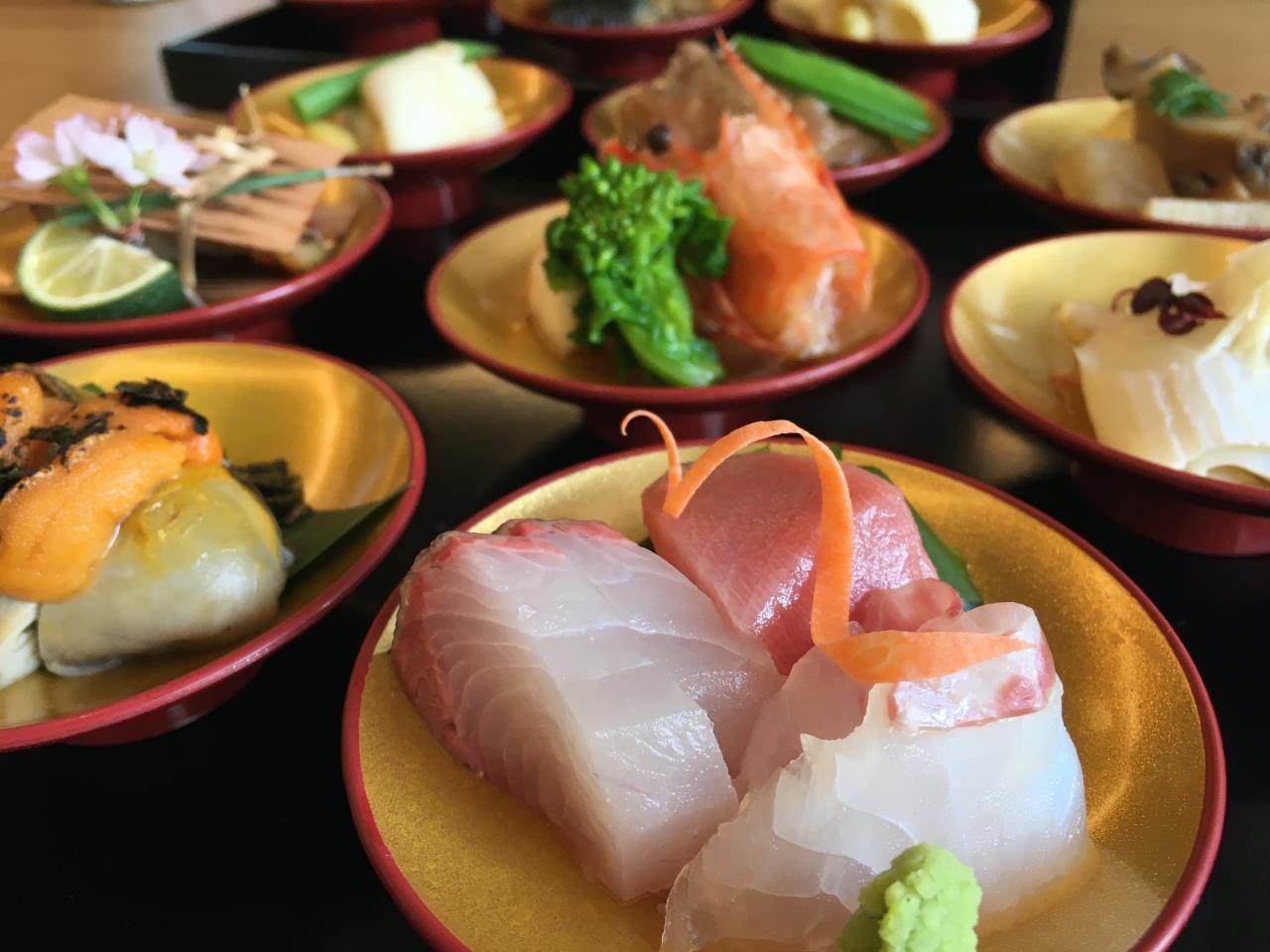
Kishu Tokugawa cuisine
After a stroll through the park at the foot of Wakayama castle, it was time for lunch, and here once more we were transported back hundreds of years. Japanese restaurant Chihiro has a special menu re-constructing a 400-year-old meal enjoyed by Yorinobu at Choho-ji temple to the south of Wakayama City, while he was out falconing. The tray of sashimi and other delicacies on individual gold and lacquer dishes doesn’t appear so different to a contemporary kaiseki-style meal, but the chef will tell you that it takes twice the time of a modern meal to prepare. Instead of soy sauce, you enjoy your sashimi with ‘irizake’, sake boiled with pickled plums, and the ancient flavors have been painstakingly resurrected with only the slightest adjustment to suit our modern palate. Originally this meal was eaten only by Yorinobu himself, in a private room at the temple, but now you can enjoy it in the comfort of a modern restaurant. The story and effort put into reconstructing a 17th century meal fit for a lord is fascinating, but more importantly, perhaps, it makes for a truly delicious lunch. And if you fancy more matcha, Chihiro also has a wonderful modern raised tea-room with stools, where you can enjoy an authentic tea-ceremony without worrying about getting cramp in your legs.
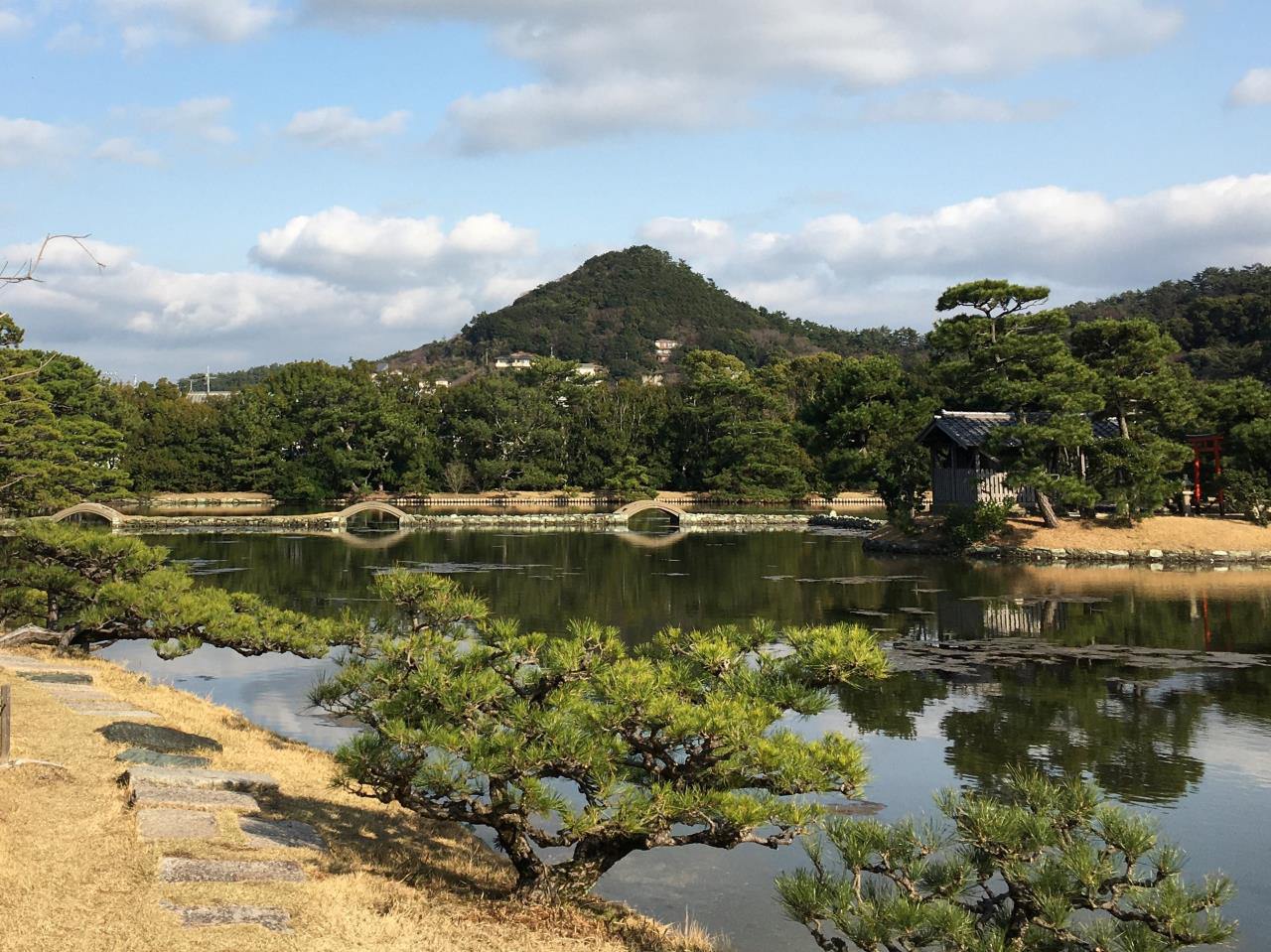
Yousuien Garden
After lunch we headed to the coast to visit some gardens, but first we stopped at Manpa Resort Hotel to pick up Glafit bikes to help us get around. Glafits look like a regular, small-wheeled commuter bicycle, but are fitted with a powerful electric motor that whizzes you along effortlessly. They qualify as mo-tor-scooters in Japan so you need a driving license to rent one, but with our helmets on and after a slightly wobbly start, we were soon zipping up and down the coastal roads, peddling like fury to get up the steeper hills, and zooming along the flats until we arrived at the Yousuien garden in no time at all.
Yousuien is a vast 33,000 m² garden built in 1818 by the tenth lord of Kishu, Tokugawa Harutomi. The majority of the trees in the garden are pines and conifers, favored by Harutomi as they remain green all year round, and the center piece of the garden is a huge saltwater lake that fills with the tide. If you are lucky you will see jumping striped mullet, and can enjoy the seasonal flowers and foliage between the pines. Perhaps most surprisingly, although registered as a National Place of Scenic Beauty site, the gar-den is privately owned and maintained, having been sold by the Tokugawa family after the Meiji Resto-ration. We were fortunate that there were hardly any other visitors when we arrived and we had the gardens almost entirely to ourselves. Wandering slowly along the pathways through the pine trees, and over the miniature bridges and causeways across the lake, it was easy to imagine Lord Harutomi enjoy-ing the gardens. Just three years before they were completed, Napoleon Bonaparte had been exiled to Elba, and after Waterloo the great wars across Europe calmed for the time-being. But that same year the British defeated the mighty Maratha Empire and The East India Company took control of much of India. And in China too, the British opium trade was reaching new heights, and heading towards war. Although Japan was still closed to the west, Harutomi probably knew at least something of these events. He used the Yousuien gardens as a place to work on policies to revitalize local industry, culture and education, but it is unlikely he could have guessed as he relaxed from his duties in the tea house gazing across the lake to the mountains beyond, that they were to lead to one of the greatest upheavals Japan had ever known.
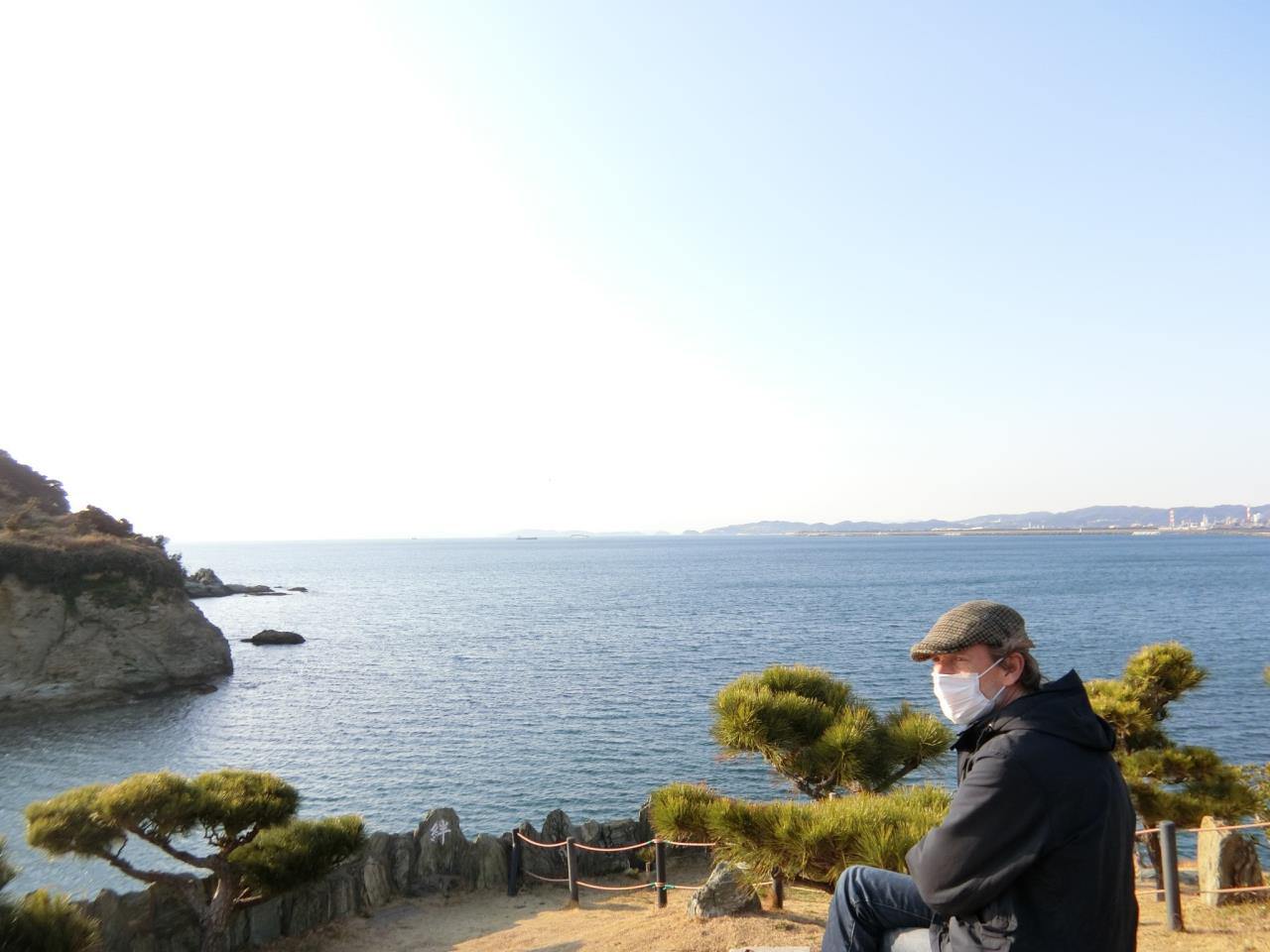
Bandoko Garden
Another short bike ride to the coast brought us to Bandoko Garden, and another reminder of the events that were to bring an end to the Tokugawa reign. Bandoko translates simply as “Look-out Place”, and in the mid 19th century this promontory, sticking out like a thumb into Wakaura Bay, was just that, a place where the watch would look out for the feared ‘Black Ships’ of the westerners attempting to add Japan to their trading centers. Uniquely amongst the Asian nations being forcefully encroached on by the west at that time, Japan mostly managed to keep the westerners at arms length. But even before their arrival the peace and stability of the Edo period was beginning to crack at the seams, and the com-ing of the westerners in their modern warships eventually triggered great changes in Japan, leading to the Meiji Restoration and the opening of Japan to the world after 250 years of isolation. Bandoko Gar-den hides this history under its modern garden facade, but you can stand at the very tip of the promon-tory high on the cliffs looking over the tiny islands at its tip across to Awajishima and Shikoku in the distance, and imagine the tension of the look-out watching the night sky for shadows, ready to light his signal fire and alert the lords in Wakayama castle at any sign of trouble.
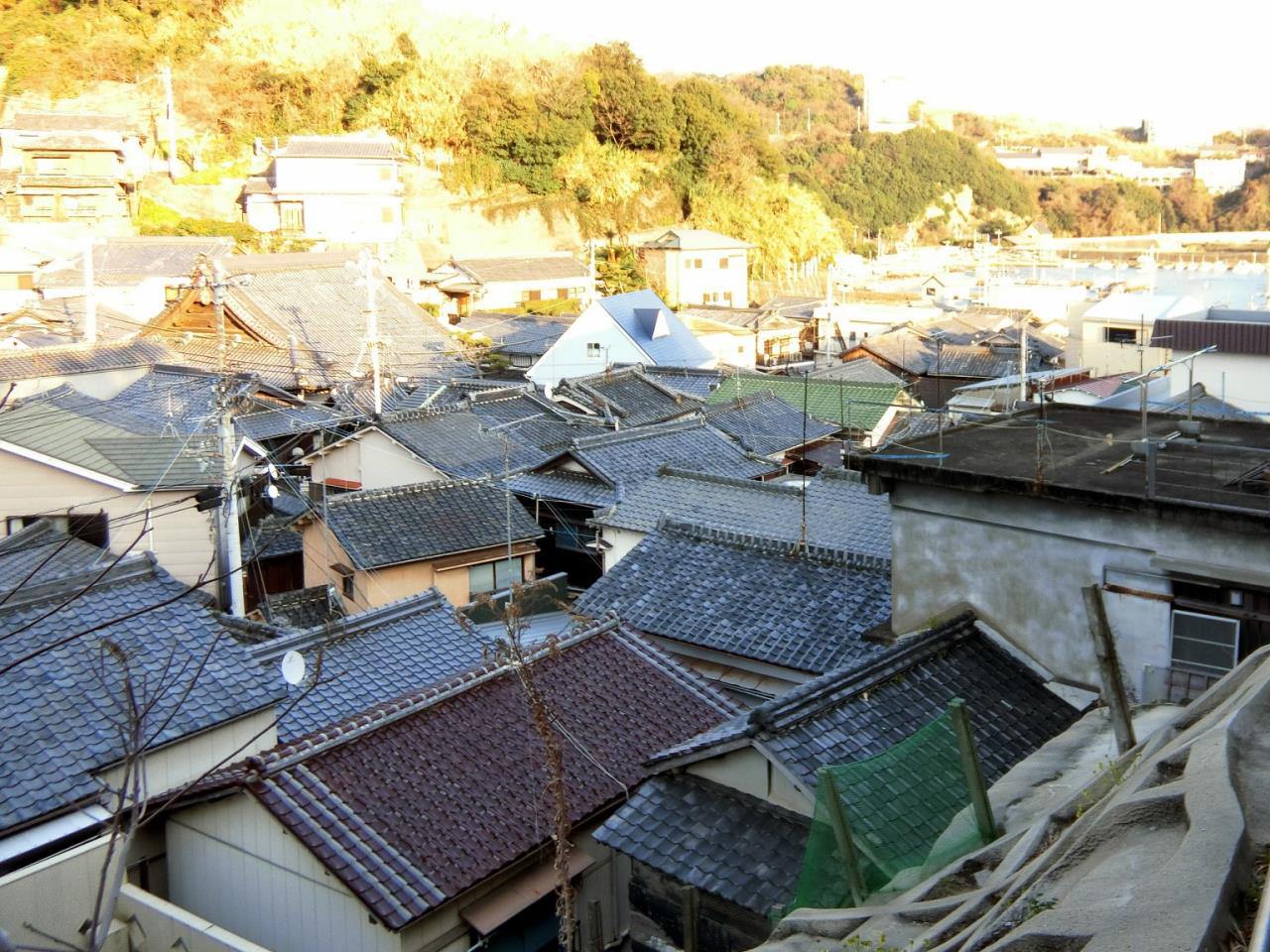
Saikazaki
A short walk up the hill from Bandoko garden we left our bikes and took a right turn down the tiniest of alleyways, and found ourself in a labyrinth of paths twisting down the mountainside through the ex-traordinary, higgledy-piggledy fishing village of Saikazaki. Here the houses are built so close they are almost on top of one another and it seems impossible that anyone could have built them at all in such a cramped space. You navigate your way through the houses down tiny pathways twisting and turning, with someone’s front door to one side and looking down on a rooftop to the other. Most of the houses are still owned by fishermen, and when you finally get to the sea, the village fronts onto a working fish-ing harbor lined with boats and centered on a fish market. We arrived in the early evening and the har-bor was quiet but for the last embers of a fire that must have warmed the fishermen earlier in the day, and a few lazy dogs sniffing around the nets. But in the early morning the harbor will be bustling with boats and vans and people and fish. There are no frills or concessions to the tourist here, and so, happi-ly, the village has maintained its rough, working edge. I did spot a couple of good-looking cafes amongst the jumble of houses, although sadly we had no time to sample a cup of the local coffee.
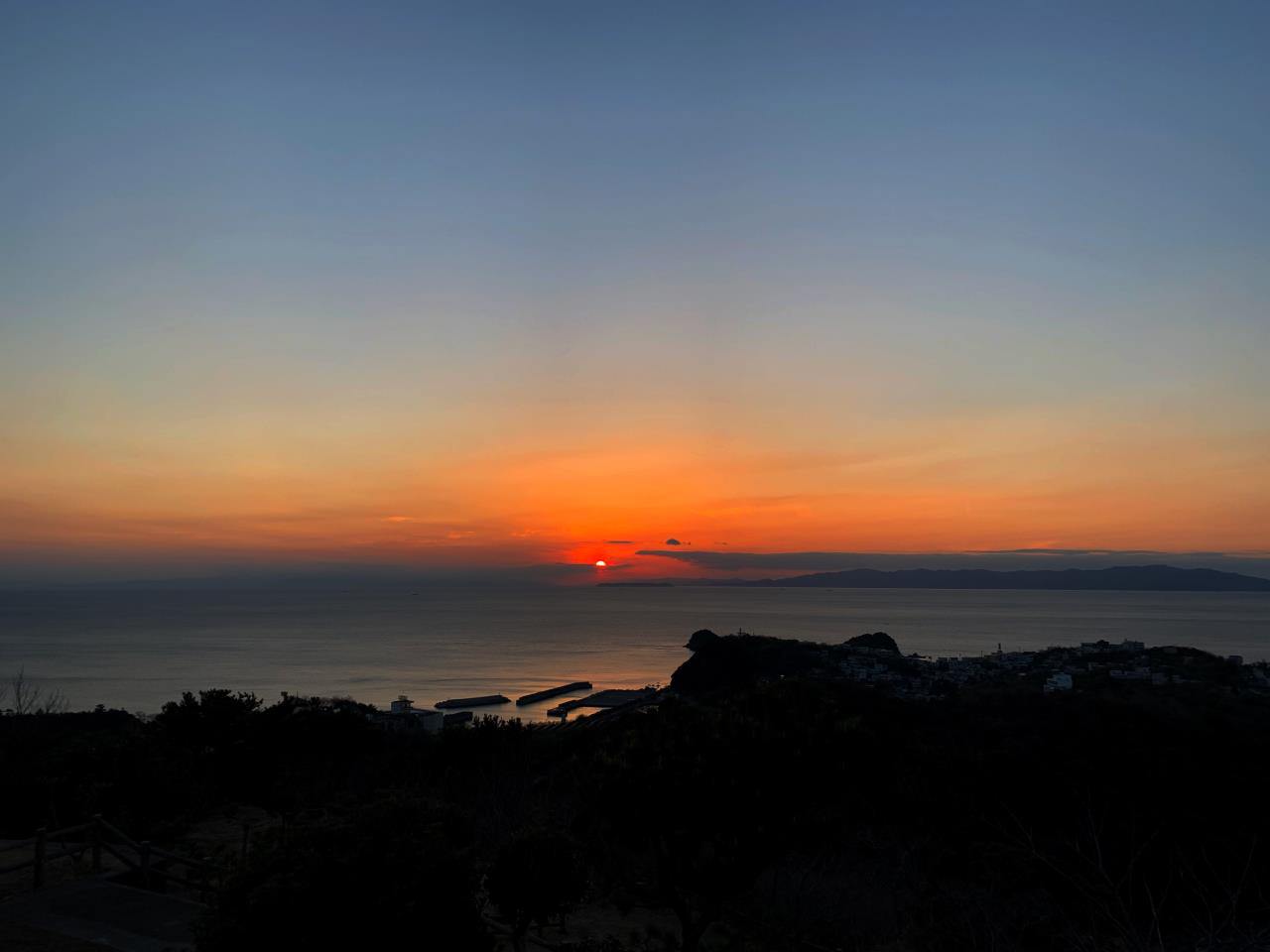
Takatsushiyama view point
Dropping our Glafits back at the hotel about 30 minutes before sunset, we crossed the road and started up the mountain path. After a stiff 20 minute climb we arrived at the viewing deck on the highest peak, and were greeted by spectacular 360 degree views, with Wakayama’s city center to one side and Wakaura Bay on the other, and a glorious sunset beyond the shadows of Shikoku in the distance across the sea.
Then back down the mountain again and it was time for dinner. Ganko Rokusanen is run by restaurant chain, Ganko, but is located in a vast, early 20th century Japanese house built as a holiday residence by businessman and investor Isuke Matsui in 1920. The beautiful, sprawling house boasts a huge Japanese garden filled with ponds and stone lanterns which you can wander around a leisure, and make a spec-tacular backdrop to your meal.
My hotel for the night was the Daiwa Roynet Wakayama, a large, modern hotel in the center of Waka-yama. As I settled into my room on the 15th floor, I pulled back the curtains to reveal Wakayama Castle gleaming under spotlights, seemingly just an arms length away, and once again was left to imagine Wa-kayama of the 17th century, as I drifted into sleep.
Check also...
![Take a leisurely stroll in the retro and fashionable space [Kuroe, the town of Kishu lacquerware]](/kansaiguide/data/article/21000/20278/20250618_133123_770e1e88_w640.webp)
Take a leisurely stroll in the retro and fashionable space [Kuroe, the town of Kishu lacquerware]

Consider your accommodation in the Kansai area!

Restrictions on Large Baggage

Hidden Stories in Stone: Exploring Japan’s Castle Walls

Feel Like a Lord: Castle with Stunning Panorama Views

Experience the True Essence of Japan through Castles, Cultural Treasures, and Timeless Gardens
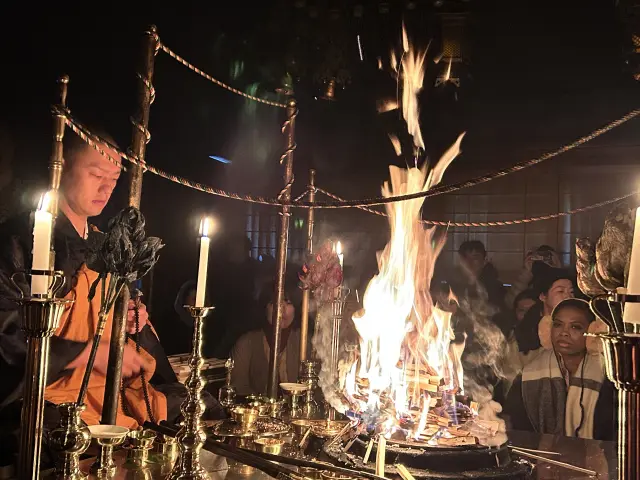
Departing from Osaka, Exploring Wakayama and Tokushima: A Journey Connecting Mountains and Sea with a Focus on Mindful Sustainability
